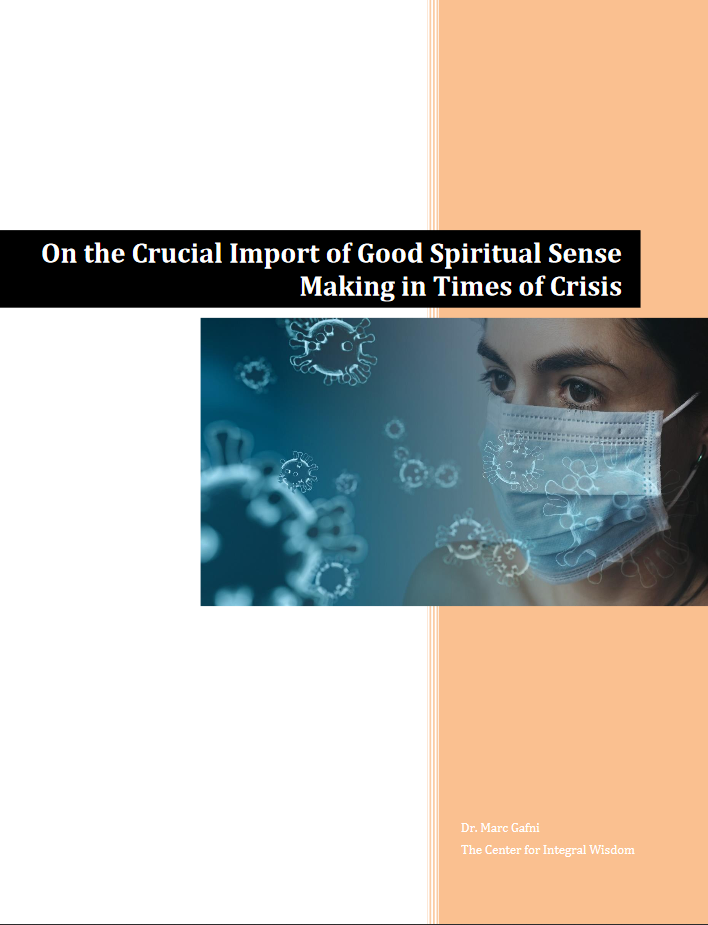Note: This is the lightly edited, updated, and expanded transcript of an oral talk given by Dr. Marc Gafni towards the end of March, 2020. The original talk is found here.
Welcome, everyone. It’s a hard time. It’s a painful time. What we want to do in this short article is what we might call sense making. It’s a time when we need to do sense making – both personal and collective.
Part of meeting this challenge – and any challenge – is having a common thread, a shared understanding of the truth, both subjective interior and objective exterior truth, based on the best information we have, the best cumulative wisdom we have drawn from all of its sources, contemporary as well as ancient. We might call this shared sense making common sense. We need common sense making to understand everything that is happening and our place in it. But it is not only an interior necessity for our internal well-being and sanity – which of course has enormous impact on our external health [see PsychoNeuroImmunology and all of the extensive literature on the feedback loop between interiors and exteriors] – but it is more than even that.
It is deeper than that. This is a moment where we need to come together deeply – as One People, One World, One Cause, One Love, One Heart, to fight for the common good against a common enemy. And yet although it is not New Age, politically correct, it is appropriate to call a virus that kills people a common enemy. Obviously viruses are not the enemy. We are each constituted by 380 trillion viruses. We are viruses. But this particular virus that is killing us is in this moment our enemy. To fight it and other deadly mutations of the virus in the future we need however not only to create a vaccine but to do deeper sense making and understand as best as we can the deeper fact patterns that caused the virus. To do that we need common sense or common sense making, a shared story, a narrative thread of meaning that we can all locate ourselves inside of…

